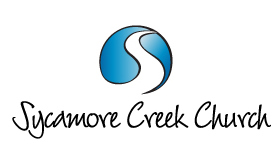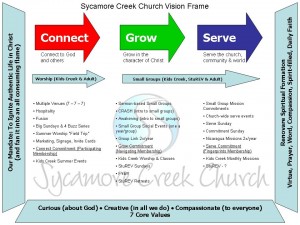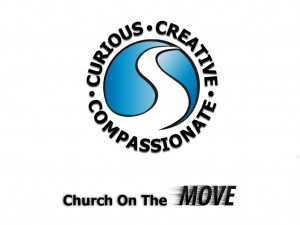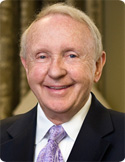This past Sunday, Mark Aupperlee, our Small Groups team leader handed out an excellent sheet sumarizing our small group philosophy and method at SCC. I thought it was good enough to post for others to see.
Small Groups at SCC
At Sycamore Creek Church we believe that small groups are essential for spiritual growth. We orient spiritual growth at SCC around a three-part process of connecting, growing, and serving. A small group is a committed group of people who are connecting (to God and one another through social events and celebration), growing (in the character of Christ by holding one another accountable to worship teaching content), and serving (the church and through missions commitment to the community).
Thus, small groups at Sycamore Creek Church have three objectives: Connecting, Growing, Serving.
Connecting
-small group meeting two times per month
-host a “connect event” (social event) one time per year
-regularly attend worship services
-attend GroupLink connection event twice a year
Why be in a small group?
http://www.smallgroups.com/articles/2011/sgreallyabout.html
Growing
-accountability to each other in order to grow in Christ
-regular sharing of struggles and celebrations
-discussion and application of sermon content from worship services
Why sermon-based small groups?
http://www.smallgroups.com/articles/2011/iamsuchabeliever.html
Serving
-serve each other in the group
-regular mission to the greater Lansing area
-encourage individuals to serve within a ministry of the church
Why small groups and mission?
http://www.smallgroups.com/articles/2010/whysgonmission.html









Recent Comments